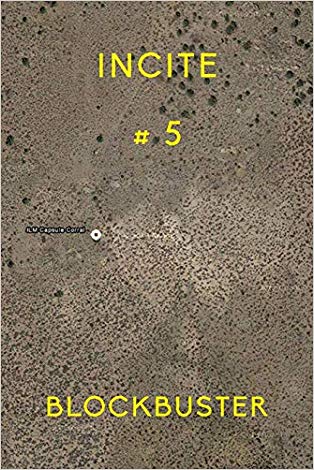 The term BLOCKBUSTER first appeared in the 1940s, coined by U.S. print media outlets to describe a new design of large, aerial bomb capable, upon explosion, of destroying an entire city block. By the 1970s, BLOCKBUSTER had been appropriated by the entertainment industry and was used by reporters and reviewers to hype awesome audience responses to movies like Jaws and Star Wars, which subsequently ballooned the Hollywood landscape into a mass-market cultural phenomenon. In the decades since, the meaning of BLOCKBUSTER has transformed yet again. The word now connotes marketing rhetoric, and is deployed as much by Pharmaceutical companies to sell drugs-like the osteoporosis "bone blockbuster" Denosumab-as by producers to sell tickets. The BLOCKBUSTER, no longer descriptive of destructive potential nor viewer response, has become a directive to consumers: A Must See command. Today, with the rise of instantaneous and participatory media, this BLOCKBUSTER entertainment experience has been divorced from an exclusive relationship with theater and is quickly creeping inside public institutions like Art and Scienc
The term BLOCKBUSTER first appeared in the 1940s, coined by U.S. print media outlets to describe a new design of large, aerial bomb capable, upon explosion, of destroying an entire city block. By the 1970s, BLOCKBUSTER had been appropriated by the entertainment industry and was used by reporters and reviewers to hype awesome audience responses to movies like Jaws and Star Wars, which subsequently ballooned the Hollywood landscape into a mass-market cultural phenomenon. In the decades since, the meaning of BLOCKBUSTER has transformed yet again. The word now connotes marketing rhetoric, and is deployed as much by Pharmaceutical companies to sell drugs-like the osteoporosis "bone blockbuster" Denosumab-as by producers to sell tickets. The BLOCKBUSTER, no longer descriptive of destructive potential nor viewer response, has become a directive to consumers: A Must See command. Today, with the rise of instantaneous and participatory media, this BLOCKBUSTER entertainment experience has been divorced from an exclusive relationship with theater and is quickly creeping inside public institutions like Art and Scienc
 The term BLOCKBUSTER first appeared in the 1940s, coined by U.S. print media outlets to describe a new design of large, aerial bomb capable, upon explosion, of destroying an entire city block. By the 1970s, BLOCKBUSTER had been appropriated by the entertainment industry and was used by reporters and reviewers to hype awesome audience responses to movies like Jaws and Star Wars, which subsequently ballooned the Hollywood landscape into a mass-market cultural phenomenon. In the decades since, the meaning of BLOCKBUSTER has transformed yet again. The word now connotes marketing rhetoric, and is deployed as much by Pharmaceutical companies to sell drugs-like the osteoporosis "bone blockbuster" Denosumab-as by producers to sell tickets. The BLOCKBUSTER, no longer descriptive of destructive potential nor viewer response, has become a directive to consumers: A Must See command. Today, with the rise of instantaneous and participatory media, this BLOCKBUSTER entertainment experience has been divorced from an exclusive relationship with theater and is quickly creeping inside public institutions like Art and Scienc
The term BLOCKBUSTER first appeared in the 1940s, coined by U.S. print media outlets to describe a new design of large, aerial bomb capable, upon explosion, of destroying an entire city block. By the 1970s, BLOCKBUSTER had been appropriated by the entertainment industry and was used by reporters and reviewers to hype awesome audience responses to movies like Jaws and Star Wars, which subsequently ballooned the Hollywood landscape into a mass-market cultural phenomenon. In the decades since, the meaning of BLOCKBUSTER has transformed yet again. The word now connotes marketing rhetoric, and is deployed as much by Pharmaceutical companies to sell drugs-like the osteoporosis "bone blockbuster" Denosumab-as by producers to sell tickets. The BLOCKBUSTER, no longer descriptive of destructive potential nor viewer response, has become a directive to consumers: A Must See command. Today, with the rise of instantaneous and participatory media, this BLOCKBUSTER entertainment experience has been divorced from an exclusive relationship with theater and is quickly creeping inside public institutions like Art and Scienc